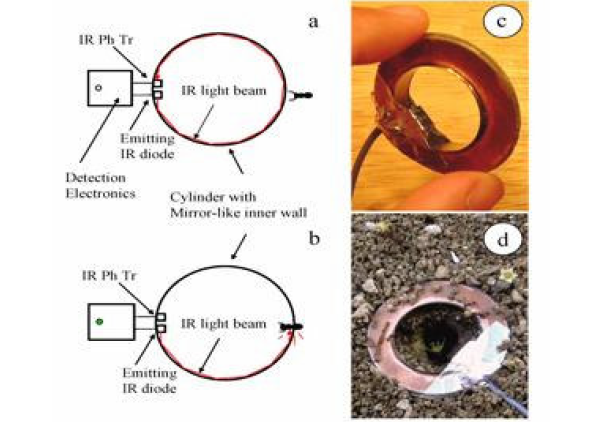Activity in Ant Colonies
Abstract
Ants, as paradigm of social insects, have become a recurrent example of efficient problem solvers via selforganization. In spite of the simple behaviour of each individual, the colony as a whole displays “swarm intelligence:” the organization of ant trails for foraging is a typical output of it. But conventional techniques of observation can hardly record the amount of data needed to get a detailed understanding of self-organization of ant swarms in the wild. Here we are presenting a measurement system intended to monitor ant activity in the field comprising massive data acquisition and high sensitivity. A central role is played by an infrared sensor devised specifically to monitor relevant parameters to the activity of ants through the exits of the nest, although other sensors detecting temperature and luminosity are added to the system. We study the characteristics of the activity sensor and its performance in the field. Finally, we present data measured at one exit of a nest of Atta insularis, an ant endemic to Cuba, to illustrate the potential of our system.

This work is licensed under the Creative Commons Attribution-NonCommercial 4.0 International (CC BY-NC 4.0) license.








